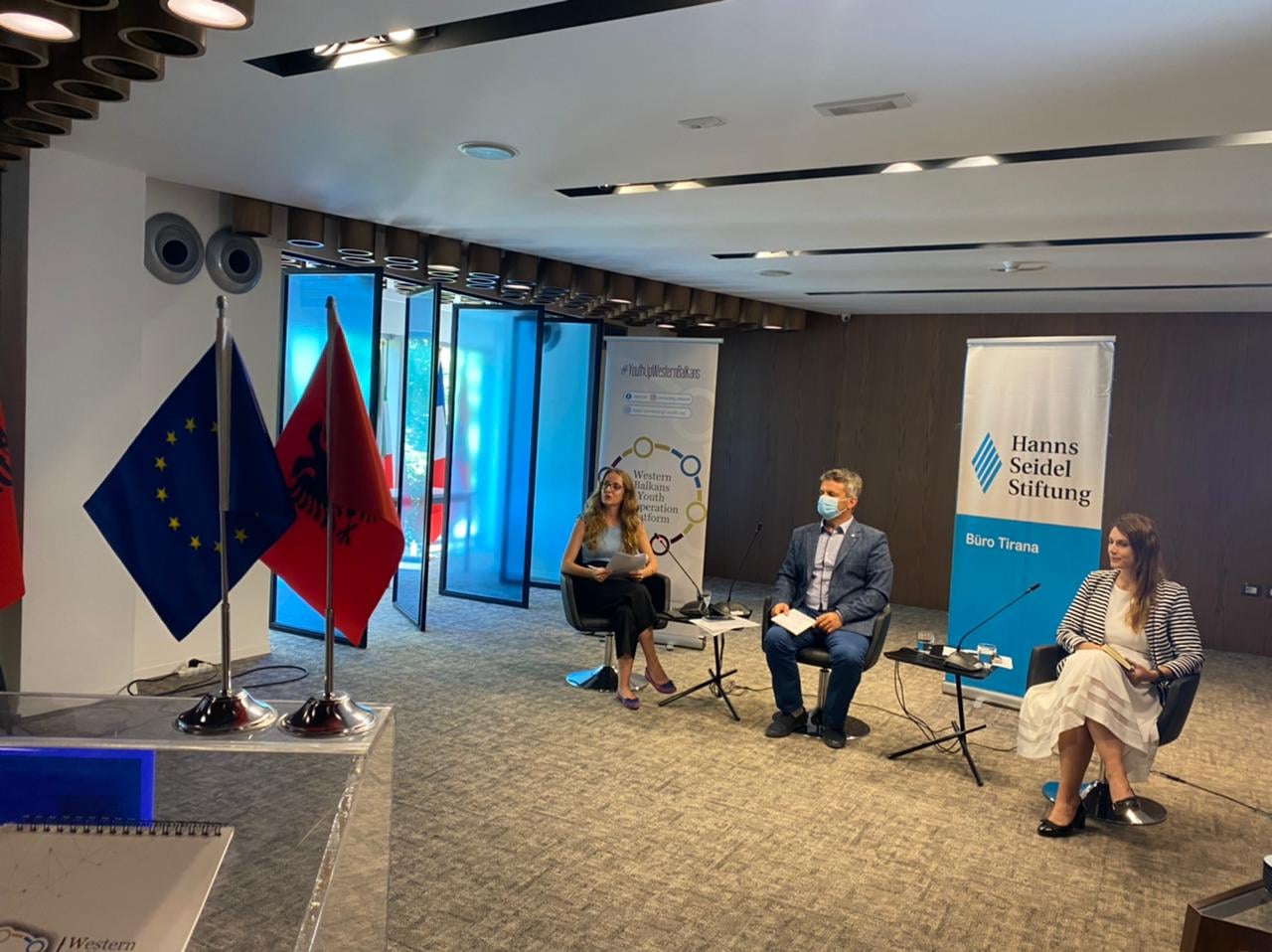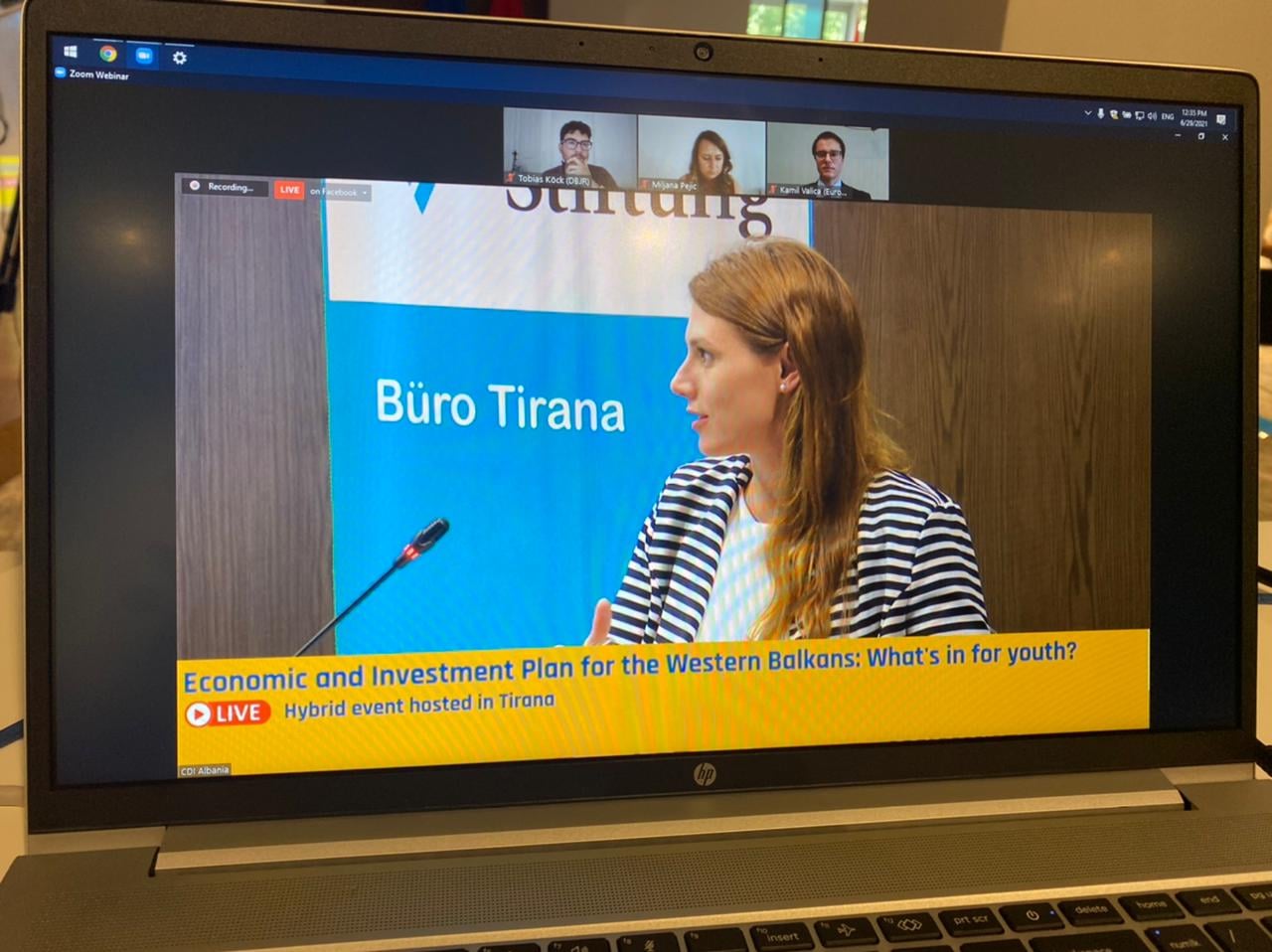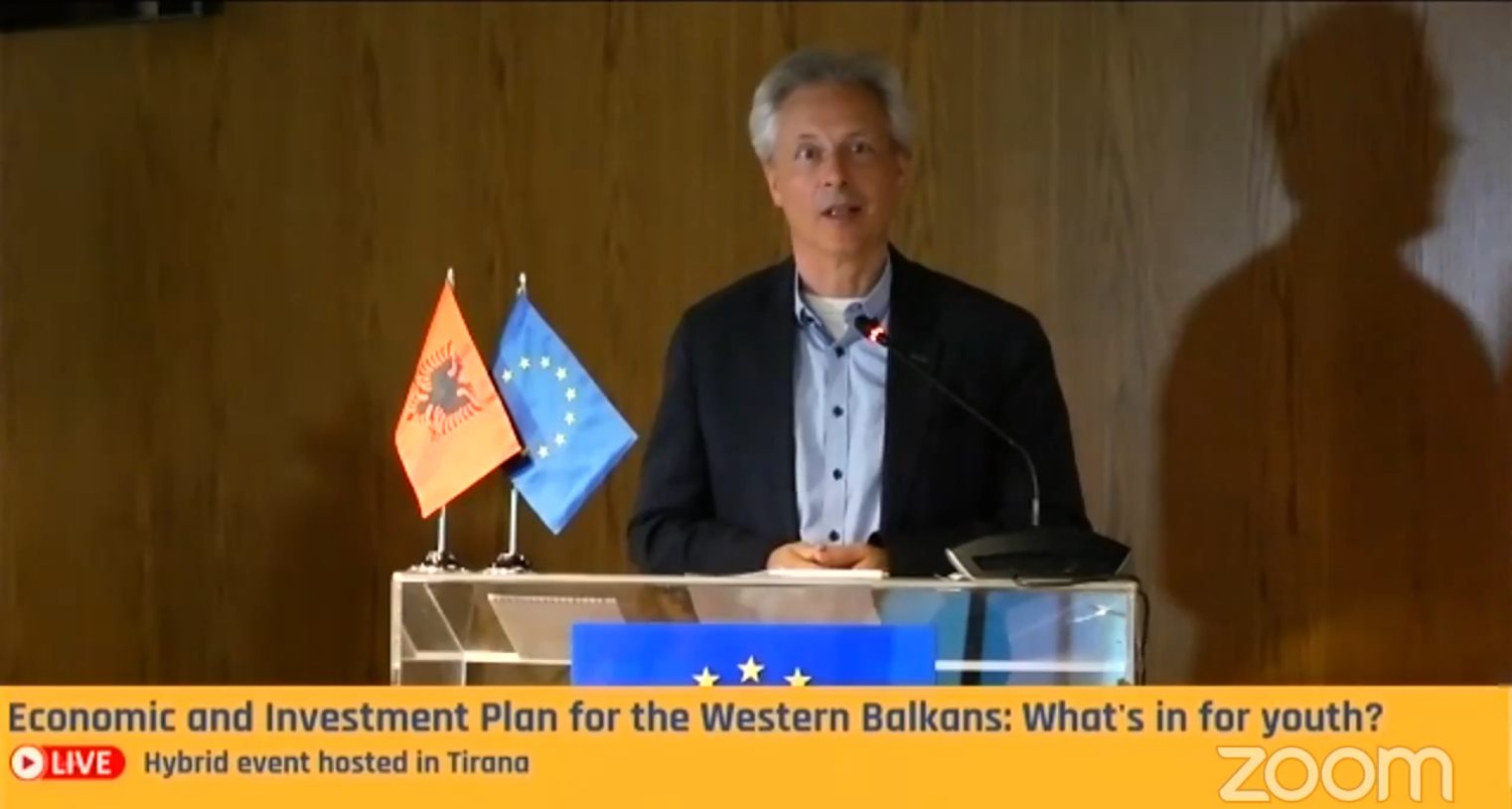29.06.2021

Date: 29 June 2021
The 5th anniversary of the Connecting Youth (CY) serves as an undisputed evidence of the need for a bottom up inter-regional cooperation in youth advocacy for political involvement. The hybrid conference Economic and Investment Plan for the Western Balkans: “What’s in for youth?” held on the 29th of June aimed to unravel how the Economic and Investment Plan (EIP) framework serves to promote youth involvement beyond its current situation. The speakers that were in-person at the European House in Tirana were, Krisela Hackaj, Director of Cooperation and Development Institute, Klaus Fiesinger, Regional Director for Southeast Europe at Hanns Seidel Foundation, Albert Hani, RYCO Secretary General and Bora Muzhaqi, Deputy Minister of Education, Youth and Sport. Meanwhile Kamil Valica, Team Leader for EU Enlargement, European Commission, Directorate-General for Employment, Social Affairs and Inclusion, Miljana Pejic, KOMS Secretary General, Tobias Koeck, President at the German Federal Youth Council (DBJR) participated remotely. The moderator of the conference was Gresa Smolica, Project Officer at the Cooperation and Development Institute.
Krisela Hackaj began to answer the question “What’s in for Youth?” by providing the context of the flagship initiatives in the EIP. She mentioned how the flagship focused on Youth Guarantee needed more specifications to allow for active steps to be taken by youth societies. “Strategic mindset that compliments governmental top down approach with grassroots bottom up initiative and hands on and input experience, increases the implementation result and ensures two very important ingredients for youth policies to have an impact: inclusiveness and transparency” addes Ms. Hackaj at the end of her talk.
Klaus Fiesinger emphasized the value of the CY platform and its bottom up approach to foster networking, mainstreaming strategies among the Western Balkans in terms of youth issues. Upcoming strategy plans are being formulated and could take inspiration from the EIP focus on infrastructure and other sectoral policies.
Miljana Pejic gave insights on the challenges of youth councils by taking the case study of KOMS activity in Serbia. She emphasised how developing closer ties with the political landscape allowed KOMS to mainstream youth issues on political parties agenda, ensuring that youth issues are becoming part of the political discourse. With the newly acquired legal status as the de facto youth council in Serbia Ms. Pejic added the following “We can use this opportunity to even further develop some of the key advocacy initiatives and to be a good example to other youth councils that are now in different organisational development steps.”
Bora Muzhaqi provided the lessons learned from the national strategy for youth 2015-2022 that it was too ambitious and didn’t provide cohesion among the different ministries in Albania. For the 2022- 2029 draft national strategy for youth the focus will be on two core targets while having several minor issues to work simultaneously. The strategy takes a bottom up approach as it involves the youth itself in expressing their issues and concerns from all regions of the country and not just in Tirana as it has happened in previous agendas.
Albert Hani, addressed the needs and concerns of youth agencies in the region. His main takeaway was that “We are looking for unique solutions that have to come from youth” further emphasising the need for a bottom up approach to support the dream of youth involvement in the region. Mr. Hani stressed the importance of seeing youth not only as a tangential outcome to other policies but as a mechanism for a difference in our lives.
Kamil Valica, demonstrated how North Macedonia has made progress in applying the Flagship 10 framework in its domestic policies. Mr. Valica stressed the importance of developing strategies to achieve the main issue of youth agencies: youth involvement in politics. He recognised that the Youth Guarantee initiative is an ambitious plan but seeing how it was implemented in North Macedonia, the youth trajectory taken there can be used as guideline for the rest of the countries in the region.
Tobias Köck, drew attention to the obstacles in youth cooperation. He emphasized how the duty of youth agencies is to reach out to the entire youth demographic and not just the educated ones. Youth councils should aim to be involved beyond domestic level and aim for involvement in the regional and European scale. The three main takeaways of EIP for the region and the youth demographic are (1) financial resources, (2) trust between young people and official institutions and (3) perspective for the future.
A moderated Q&A session was conducted by Gresa Smolica where unresolved topics were brought into focus such as key ingredients for a successful youth agency organisation, the extent of youth involvement in political decision making, and the upcoming event taking place in Ljubljana where 33 ministers from European member states and Western Balkans will discuss and streamline socio-economic issues of the youth.
The event was conducted in English and the link to the recording can be accessed here.



